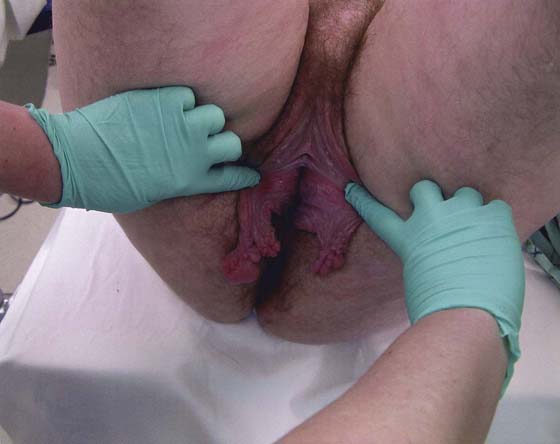CHAPTER 102 The labia minora range in size and configuration from individual to individual. These small labia play a significant anatomic role in controlling under normal circumstances ingress and egress to and from the vestibule. These labia keep the vestibular skin moist and prevent external detritus from entering the lower vagina and vestibule. Occasionally, the labial configuration is greatly exaggerated so as to create hygienic problems (Fig. 102–1). Labial hypertrophy can also damage the tissue by snagging on clothing and tearing. Likewise, chronic irritation may create fissures and/or ulcers. For the previous circumstances, labial reduction may be indicated (Figs. 102–2 and 102–3). The procedure removes excessive tissue, leaving behind sculpted but reduced labia (Fig. 102–4). Complete amputation is rarely if ever indicated. Other indications for labial reduction may be solely aesthetic and/or psychological. Any woman requesting labial reduction requires education about variations in vulvar anatomy and symmetry, as well as the normality of these variations. An alternative technique for simplifying excision of excess labial tissue is wedge resection, which incorporates flap advancement. The advantage of the flap advancement technique relates to the fact that the free margins of the labia minora are preserved. Therefore, the likelihood of alteration in skin color and texture is reduced. Fig. 102–5A through C schematically illustrates a Z-plasty technique. Figs. 102–6 through 102–16 show the details of a wedge-type labial plasty in a woman who desired labial reduction. The young woman complained about pulling irritation and embarrassment related to the size of her labia minora. FIGURE 102–1 Massive hypertrophy of the labia minora in a young woman with cerebral palsy.
Surgery for Labial Hypertrophy
Stay updated, free articles. Join our Telegram channel

Full access? Get Clinical Tree


 Mickey M. Karram
Mickey M. Karram
